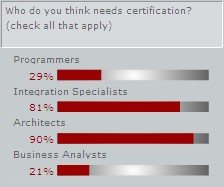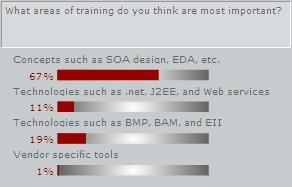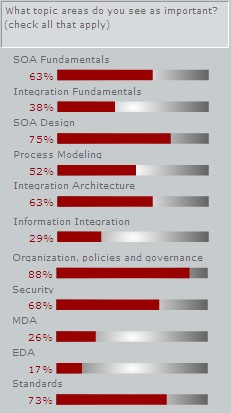From Intelligent Enterprise, the top 5 myths of SOA:
- If you’re using Web services, you’ve achieved SOA.
- You can buy SOA out of the box.
- You can simply wrap legacy systems with services.
- Once the top executives are sold on SOA, your troubles are over.
- SOA is easy.
Check out the article for the details (not particularly meaty) on each.
I consider the last two myths to be self-evident for any type of non-trivial technology, so are a bit frivolous to be included in this list. The first three, however, I run across on a regular basis, and are good to keep in mind when evaluating what you’re doing with SOA, and what vendors are trying to sell to you. My response when I encounter these three myths:
- Web services is a set of specific technology standards for building interoperable components. SOA is an architectural and design philosophy that is typically implemented using web services standards, but doesn’t have to be.
- You can’t buy philosophy out of the box: “I introspect, therefore I integrate” provides design guidance, but it’s not a ready-to-go product (with apologies to René Descartes).
- I’m not so sure that this is a myth, since you could actually wrap legacy systems with services interfaces and they would become valid parts of your SOA environment. The point in the IE article is that maybe this is a good time to reevaluate the systems that you have and replace some of that old legacy stuff, but that’s not an SOA/not-SOA decision per se.



